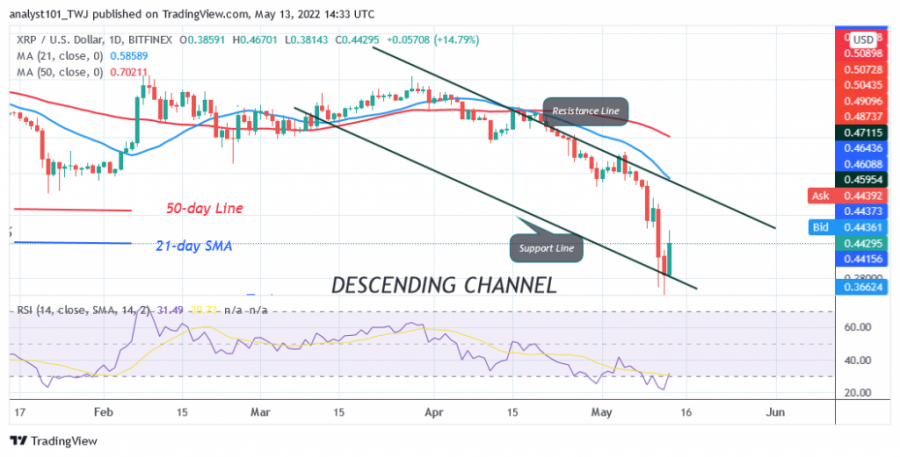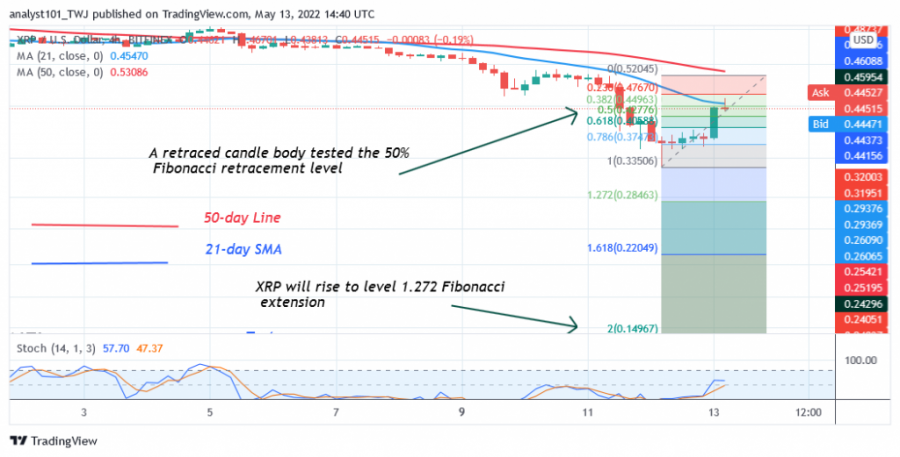Ripple Is Facing Rejection at $0.46 as Bears Resume Selling Pressure

Today, the price of Ripple (XRP) is in a downward correction as the cryptocurrency peaks at $0.46. Yesterday, the altcoin fell to the low of $0.33 as the bulls bought the dips. Buyers defended the current support from further decline in the last 24 hours.
Nonetheless, Ripple is trading in the downside zone and the upside correction is likely to face resistance at the recent highs. For example, XRP is likely to encounter resistance at $0.47 or the 21-day line SMA. XRP/USD will rally above the moving averages if the resistance levels are broken. The altcoin will also regain the psychological price level of $0.50. Conversely, the downtrend will resume if XRP turns from the recent high and falls below the support at $0.33. The market will then drop further to the low of $0.15.
Ripple indicator analysis
Ripple is in an upward correction as it has reached the level 31 of the Relative Strength Index for the period 14. XRP will regain its bullish momentum as buyers emerge in the oversold region. The 21-day line SMA and the 50-day line SMA are sloping south, indicating a downtrend. The 21-day line SMA is a resistance for the prices. The altcoin is above the 50% area of the daily stochastic. This indicates that the market is in a bullish momentum.
Technical indicators:
Major Resistance Levels – $1.95 and $2.0
Major Support Levels – $0.80 and $0.60
What is the next move for Ripple?
Ripple is in a downtrend, but the current upside correction is meeting rejection at the recent high. This suggests that selling pressure will pick up again. Meanwhile, the May 12 downtrend has shown a candle body testing the 50% Fibonacci retracement level. The retracement suggests that XRP will fall to the 2.0 Fibonacci extension level or $0.149.
Disclaimer. This analysis and forecast are the personal opinions of the author and are not a recommendation to buy or sell cryptocurrency and should not be viewed as an endorsement by CoinIdol. Readers should do their own research before investing
Source: Read Full Article


